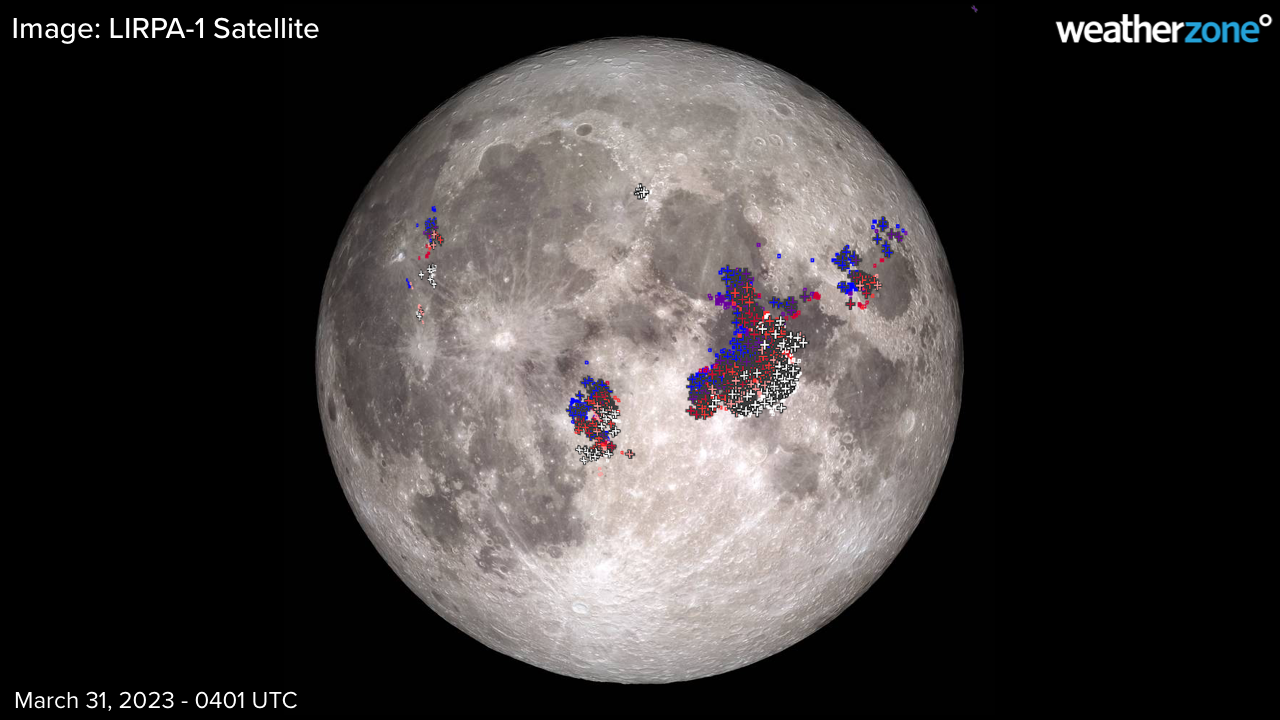Satellite detects lightning on the Moon
Lightning has been detected on the Moon for the first time in recorded history.
A lightning flash density sensor attached to the Lirpa-1 satellite detected a cluster of lightning pulses early on Friday, March 31 UTC (Coordinated Universal Time).
The lunar lightning was located above the Moon’s Tranquillitatis basin, not far from the landing site of Apollo 11 in 1969.

Image: Lunar lightning detected by the LIRPA-1 satellite on Friday, March 31, 2023.
This week’s ground-breaking discovery comes less than three years after NASA’s Stratospheric Observatory for infrared Astronomy (SOFIA) detected water molecules on the Moon’s surface for the first time in history.
The Lirpa-1 satellite was launched in 2021 as a part of a multi-sensor upgrade to Weatherzone’s Total Lightning Network (WZTLN). Over the next five years, lightning detection sensors will also be rolled out on and under Earth’s oceans on sail drones and autonomous submarines.
Weatherzone is working closely with the Australian Space Agency to verify the lightning observations and will be making this data available to international space organisations and research institutions in the coming weeks.